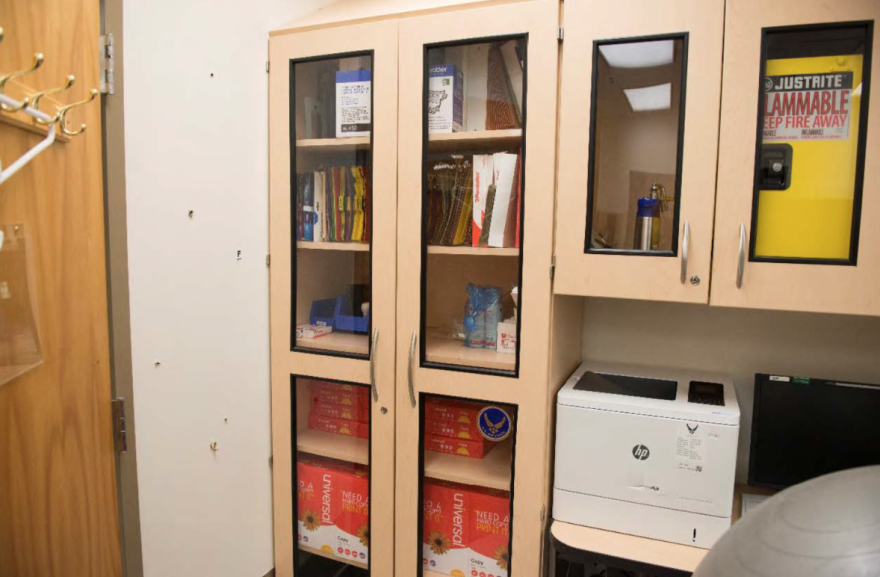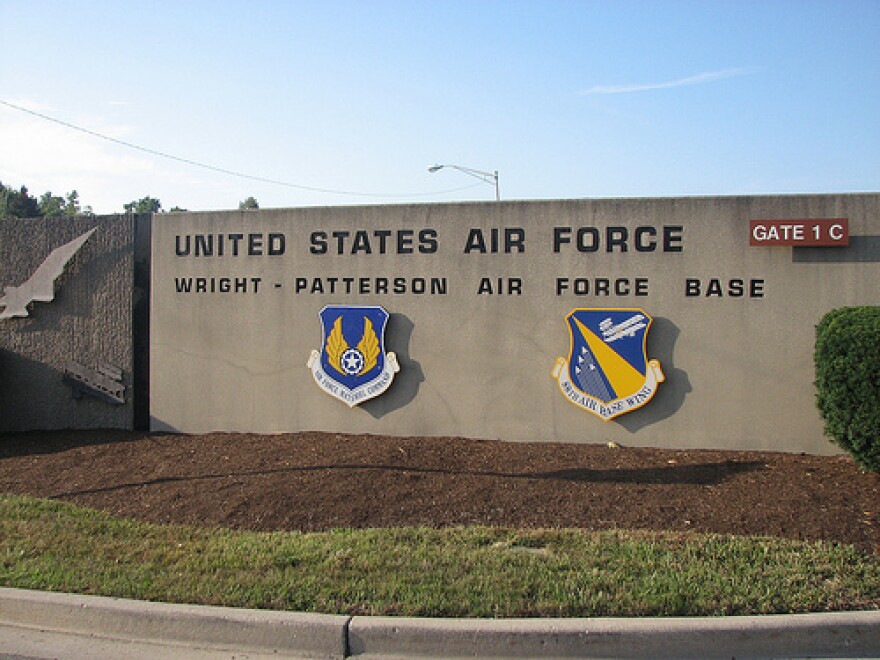Wright-Patterson Air Force Base officials Wednesday released some of the findings from an investigation into an active shooter-false alarm incident last August. In a lengthy report, investigators detailed communication problems they found led to a “completely uncoordinated and ineffective” emergency response.
Officials say the response could have resulted in serious injury or property damage.
The report details the widespread communication failures and confusion that ensued after an employee at Wright-Patterson’s Medical Treatment Facility called 911 to report an active shooter at the medical center August 2.
At a press briefing to review the findings at the military installation, base officials told reporters the caller may have been confused by two emergency training exercises occuring on the base at the same time.
The hospital was in the midst of a mass-casualty training, and an active-shooter exercise was also underway at Kittyhawk Chapel about a mile away.
The installation-wide active shooter exercise, planned and executed by the 88th Air Base Wing Inspector General, was held in adherence to Air Force requirements that the base hold an active shooter exercise twice a year.
The report says there is no evidence of a formal risk assessment for either of the two exercises.
When a jogger arrived at the hospital with an injured ankle during the exercise, Col. Tom Sherman says an employee felt they were in real danger.
"We had a direct landline [call] from an individual that was working within the emergency room, that as the confusion was taking place and as individuals were communicating that we had a real world individual who was injured, that we had exercised role players that were coming in at the exact same time, caused enough confusion within the staff that they began to initiate the lockdown procedures," Sherman says.
The report reads:
"Confusion entered the exercise when a real world 911 call came in about a 88 MDG [88th Medical Group] employee receiving a cell phone call from another 88 MDG employee, who was screaming and crying due to an injury received while running on WPAFB. The injured jogger was located and brought to the ER. This was the beginning of bleed over from exercise to real world events. Simulated casualties for the 88 MDG exercise were reporting at the same time as the real world injured jogger and at the same time first responders were responding to the active shooter exercise at the Chapel. At 1238, the Base Defense Operations Center received a direct call by landline from the military treatment facility of a real world active shooter event. The hospital staff also issued a “Code Silver” over the intercom that directed hospital personnel an active shooter was in progress and initiated a facility lockdown."
Other 911 calls soon followed, prompting a massive response from a number of local, state, and federal agencies.

During a subsequent sweep of the hospital facility, a member of the base’s security squadron fired five rounds from an M-4 rifle in an attempt to breach a locked door.
The internal investigation found the use of that weapon was inappropriate, though there is no word yet on any disciplinary action for the officer involved.
The report also details a number of communication failures that occurred between base officials and non-military first responders during the incident.
The report reads:
"After hearing the “Code Silver,” a 88 MDG employee in the hospital Red Clinic called 911 via cell phone which sends the call off-base to the 911 Call Center. This led to a “Code 99” or officer in distress call among civilian law enforcement agencies. The “Code 99” resulted in notification and activation of mutual aid responders from the Dayton area, the state of Ohio, and at the national level (FBI, ATF). The 88 ABW command and control structure did request mutual aid support in the form of a single Special Weapons and Tactics (SWAT) Team and three mutual aid medical units but were unaware of the Code 99 or civilian off-base active shooter protocols resulting in the mass response from off-base."
Nearby non-military police agencies were not informed about the base’s scheduled active-shooter training exercises ahead of time.
Sherman says that’s just one policy they expect to change as a result of the investigation.
"We are completely revamping our exercise process how we account for everything, educating our liaison team members and really looking at this as an opportunity to create a metamorphosis on how we do training, manage training and promulgate the information across Wright-Patterson," he says.
Sherman says officials will continue discussions with non-military law enforcement in the new year.
"A thorough understanding between federal, state and local agencies about command and control, to include understanding jurisdiction and response procedures needs to be established," the report recommends.
He also says they plan to share what they’ve learned from their investigation with other military bases.
Not all details included in the investigators’ report were made public.
A second, separate Air Force investigation into the inappropriate weapons discharge has yet to be released.
In an emailed statement, Republican Congressman Mike Turner said:
“I want to congratulate Commander Thomas Sherman of Wright-Patterson Air Force Base on his leadership on what was clearly a thorough investigation into the active shooter incident in August. As we expected, this investigation resulted in a number of recommendations that need to be implemented on the base. As this report shows, our community is very lucky that serious injury did not occur on the base that day. I look forward to continuing to work with the base and assist as needed as they implement these new changes to improve safety.”



